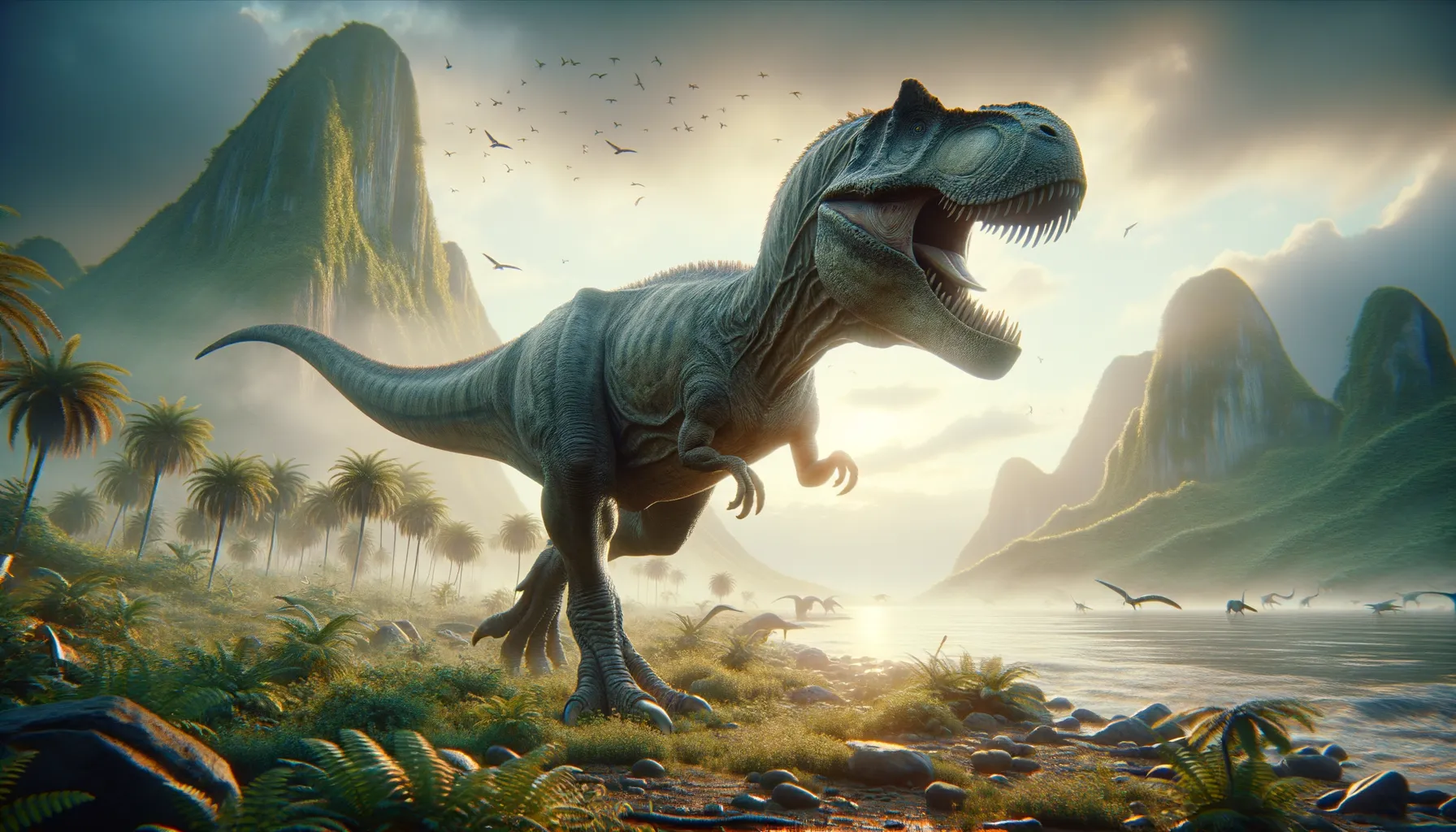
Sinosaurus
Swift hunter of ancient Chinese lands.
Period
Jurassic
Length
About 5 to 6 meters in length.
Height
Around 2 meters tall at the hips.
Weight
Approximately 300 to 500 kilograms.
Sinosaurus was a carnivorous dinosaur that roamed what is now China during the Early Jurassic period. It is known for its sharp teeth and robust build, likely making it a skilled predator of its time. The dinosaur’s fossilized remains provide crucial insight into the evolution and adaptations of early theropods, a group that eventually gave rise to the mighty Tyrannosaurus rex and modern birds.
Diet
Sinosaurus was a carnivore, primarily eating other small dinosaurs and possibly scavenging when necessary. Its sharp teeth and agile body made it capable of hunting small to medium-sized prey.
Hunting
This dinosaur probably relied on stealth and speed to ambush its prey, using its keen senses to detect potential meals. Although not the largest predator, it could have orchestrated successful hunts through quick, decisive attacks.
Environmental challenges
Sinosaurus faced numerous environmental challenges, including competition for food with other predators and fluctuating climates. Its habitat was lush with vegetation, which supported a variety of herbivores, vital for its diet. Climate changes, such as cooler periods or eruptions, may have periodically impacted the availability of prey, requiring adaptation and survival strategies.
Speed
Moderate speed suitable for short bursts.
Lifespan
Estimated to be around 20 to 30 years.
First discovery
First discovered in the Lufeng Formation, Yunnan, China.
Fun Facts
- Sinosaurus was a dinosaur that lived during the Early Jurassic period, around 190 million years ago.
- This dinosaur was discovered in China, and its name 'Sinosaurus' means 'Chinese lizard'.
- Sinosaurus is known for its sharp teeth, which suggest it was a carnivore that likely hunted small animals.
- The first fossils of Sinosaurus were found in the 1940s, but it wasn't until later that scientists recognized it as a distinct species.
- Sinosaurus was relatively small compared to other theropods, only about 5 meters long.
- It had a pointed snout and a crest on its head, which might have been used to attract mates or intimidate rivals.
- Sinosaurus lived in a time when China was a lush environment, filled with plenty of plants and small creatures.
Growth and Development
Sinosaurus likely hatched from eggs, similar to other theropods, and rapidly grew to its full height. As it matured, it developed sharper teeth and stronger limbs to aid in hunting. Throughout its life, it would have had to navigate survival challenges, honing its predatory skills.
Habitat
Sinosaurus inhabited semi-arid regions with periodic access to water sources. The area supported diverse fauna, providing ample hunting opportunities. Sheltered environments, like forests or mountainous regions, may have offered protection for nesting.
Interaction with other species
As a predator, Sinosaurus possibly competed with other carnivores for food, establishing a complex ecological dynamic, with possibly different species occupying various niches to reduce direct confrontations. Non-predatory interactions may have occurred when cohabiting water sources with herbivores.
Natural lifespan
Sinosaurus likely lived naturally for around 20 to 30 years.
Reproduction
Like many dinosaurs, Sinosaurus laid eggs, likely in nests constructed in secluded areas to protect from predators. Parental care post-hatching is not clearly understood, but some engagement in safeguarding the young during early development is plausible.
Social behaviour
Sinosaurus may have been a solitary hunter, although some evidence suggests occasional group behaviors, possibly during breeding seasons or migratory movements. Its social structures remain speculative, rooted more in reconstructions from related species.
Fossil locations
Sinosaurus fossils were primarily discovered in the Lufeng Formation in Yunnan Province, China. These finds have provided significant information about its anatomy and evolutionary timeline, aiding studies in early Jurassic ecosystems.
